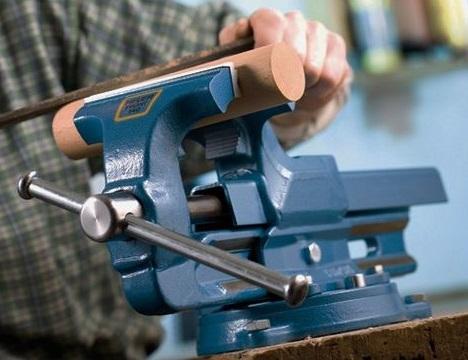Working with a bench vise can be a valuable tool in any workshop, but it’s important to use it safely to avoid injury or damage to your tools and materials. In this article, we will be providing tips on how to properly and safely use your bench vise. From securing the vise to your workbench, to using the correct size jaw for your workpiece, to properly cleaning and storing your vise, these tips will help ensure that you’re able to use your vise effectively and without injury. So, whether you’re a seasoned professional or a new hobbyist, take a moment to read through these tips to ensure that you’re using your bench vise safely and correctly.
- Make sure your bench vise is securely attached to your workbench before using it. A loose vise can easily move or tip over, causing injury or damage to your tools and materials. It is important to make sure that the vise is properly installed on a stable and secure workbench surface. This will ensure that the vise remains in place while you are working, which will reduce the risk of accidents and injuries. If you’re not sure how to properly install your vise, consult the manufacturer’s instructions or consult a professional.
- Use the correct size jaw for your workpiece to avoid slippage and damage. Using the wrong size jaw can cause your workpiece to slip or become damaged, putting you at risk of injury. Additionally, using the wrong size jaw can also damage the vise itself. To ensure that you’re using the right size jaw, measure the dimensions of your workpiece and consult the manufacturer’s instructions for recommended jaw sizes. It’s also a good idea to have a variety of jaw sizes on hand so that you can easily switch out the jaw as needed for different projects.
- Never use a vise as a clamp. Vises are designed to hold work in a specific position, not to clamp it in place. Using a vise in this way can cause your workpiece to become damaged or even cause injury to yourself or others. Additionally, using a vise as a clamp can also damage the vise itself. Instead, use a proper clamp for clamping tasks, and use the vise only for holding your workpiece in place.
- Keep your fingers clear of the jaws. It’s easy to forget to keep your fingers away from the jaws when you’re focused on your work, but it’s essential to do so in order to avoid injury. Make sure to keep your fingers well away from the jaws at all times, even when adjusting the jaw or tightening the vise. If you’re working with a particularly small workpiece or need to get close to the jaws, consider using a pair of pliers or a tool with long handles to hold the workpiece instead.
- Always wear appropriate PPE, such as safety goggles and gloves, when working with a bench vise. Safety goggles will protect your eyes from flying debris and gloves will protect your hands from cuts and scrapes. It’s also important to wear appropriate clothing and closed-toe shoes to avoid getting caught in the vise or other hazards. By wearing the appropriate PPE, you’ll be better protected in case of an accident and will be less likely to sustain an injury.
- Use the vise on a stable and secure surface. A vise can tip over or slide around if it’s not on a stable and secure surface, which can cause injury or damage to your workpiece or tools. It’s important to use the vise on a flat, level surface that is sturdy enough to support the weight of your workpiece and the vise itself. Avoid using the vise on a surface that is uneven, slippery, or otherwise unstable.
- Clean and properly store your vise after use to ensure it’s in good working condition. A dirty vise can cause rust, which can damage your workpiece and make it more difficult to use. Clean your vise with a mild detergent and a brush, and then dry it thoroughly. Once it’s clean, store it in a dry place that is protected from moisture, dust, and other contaminants. By taking good care of your vise, you’ll be able to use it for years to come.
- Be aware of the weight of your workpiece. Make sure that it’s not too heavy for your vise to
- Use the vise in the right location to avoid putting yourself or others at risk of injury. Never use a bench vise on a surface that isn’t stable or secure. This could cause the vise to tip over, putting yourself and others at risk of injury.
- Follow the manufacturer’s instructions when using your bench vise to ensure safe and proper operation. When you’re finished using your vise, it’s important to clean it and properly store it. A dirty vise can cause rust, which can damage your workpiece and make it more difficult to use. Clean your vise and store it in a dry place to ensure it’s in good working condition for your next project
In conclusion, using a bench vise safely is crucial to protect yourself and others. Remember to secure the vise, use the right size jaw, never use the vise as a clamp, keep your fingers away, use PPE, use it in the right location, clean and store it properly and be aware of the weight of your workpiece. By following these tips, you’ll be able to use your vise effectively and safely.










